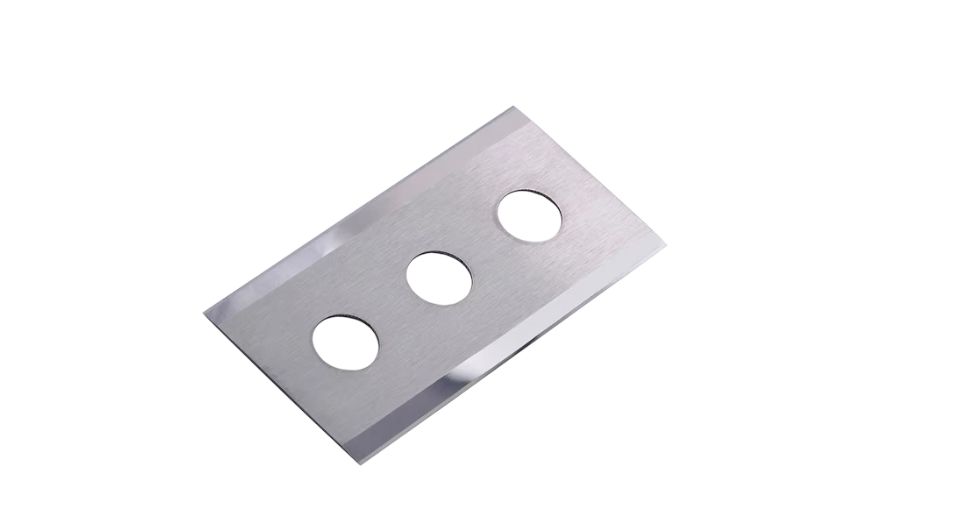
Apr 10, 2025

The latest findings recently released by Metastat Insight are indications of the various changes afoot in the Global Industrial Blades Market. The market segment has over time built itself around the practical requirements of very many industries. Ideally, industrial blades basically look like common abstract tools that serve singular purposes. However, underneath that sharp edge lies a whole network of technical precision and engineering innovation with the manufacturing aspects fine-tuned to very specific functionalities. From paper and packaging to shaping metals and slicing through food products on production lines, these blades perform with the sort of consistency and endurance modern industry quietly relies upon every single day.
Global Industrial Blades market is estimated to reach $5,564.57 million in 2024 with a CAGR of 5.2% from 2025 to 2032.
The use of blades goes well beyond the material of their construction. Steel alloys, specialized carbide composites, and ceramics are not just for novelty but fulfill very specific functional expectations which came by introducing those blades into a machine. There is in most manufacturing situations a very slim margin for inefficiency. The wrong shape or the wrong material of a blade can bring the entire production schedule to its knees, leading to waste, downtime, or bad products. It is why such an emphasis on quality and tolerance at production is so legally codified. Precision is not an option. Embedded into every part in blade development from specifications design-wise to post-manufacturing testing is that aspect, assuring the tools can compete under intense use without compromise.
The blade is not secondary equipment an industry depends on that uses cutting, shearing, scraping, or slitting functionality; it is the interface between raw material and refined product. This certainly reinforced the idea, especially since automation is on the rise. As machines are becoming more efficient, the expectation for every part in those systems is becoming higher as well. Industrial blades must now not only be consistent, but should seamlessly integrate with high-speed automated systems. A ripple effect is created across an entire production floor just by downtime incurred while replacing or adjusting a blade, so reliability and longevity have emerged as all rewards manufacturers look to seek when searching for a supplier. It's not just cutting anymore; it's about endurance, compatibility, and predictability over countless operating cycles.
Perhaps most noticeable in transformation within the Global Industrial Blades Market is customization. Across several fields-from textiles, pharmaceuticals, and plastics to food processing-manufacturers are searching for distinctive solutions according to their specifications. Hence, what was once standard has given ground to custom geometries, edge treatments, coatings, and materials engineered for specific applications. This has all resulted in creating an even closer working relationship between the blade producer and the industries they serve. Most of the business relations are now defined by design consultations, application-based prototype production, and iterative feedback loops.
In order for the discussion to include product development, logistics, and supply chain all play a role in the organization of a particular market. Quality must be consistent, as must availability of products. Delivery must be processed in time to meet the manufacturers' production schedules, while industrial blades must be distributed with the necessary urgency for such timelines. With the just-in-time strategy in effect, suppliers are expected to forecast demand variations, maintain appropriate stocks, and respond quickly to unanticipated demands. Investments have also been made in warehousing and global distribution systems so as to provide an uninterrupted flow of product in tandem with the pace of industrial demand.
In a much less audible manner, there has been a silent transition in the management of wear cycles and replacement cycles. Manufacturers are now moving to a proactive preventive maintenance mode, utilizing a blend of performance recording and inspection technologies, instead of reactive part changing each time a blade dulls or breaks. Evaluation of industrial blades is being performed in real-time, and the scheduling of their replacement is done well in advance to avoid interruption. This kind of foresight allows companies better flexibility in running their operations and budgeting with more precision, lowering the cost impact associated with unplanned maintenance and the inefficiencies of blade degradation. Blade performance is no longer regarded by manufacturers as a variable but has turned into a quantifiable making in the larger context of their production strategy.
Though industry blades were not so long in examination from an environment perspective, it is beginning to infiltrate discussions. With firms everywhere starting to reassess their influence upon the environment, blade companies have been drawn into discussions about recyclability, manufacturing waste, and material sourcing. The push for blades with longer lives is, for example, as much about the consequential decrease in downtime as it is about the sheer lowering of material consumption over time and hence the reduced frequency of replacement. Some manufacturers are contemplating methods of retrieving old blades, for material recycling or reconciling their manufacturing processes for lesser energy expenditure. These changes are showing a subtle but emerging correlation between industrial utility and sustainable values.
Metastat Insight Global Industrial Blades Market Report thus presents a dimension of insight indicating that although functioning behind the curtains more often than not, this market remains critical for large and small industries alike. These blades have been carrying out requisite functions and have been maintaining efficiency, precision, and continuity in production settings where these traits are quintessential. With increasing complexity in the industry and rising production demands, the expectations from these tools have changed too.
Drop us an email at:
Call us on:
+1 214 613 5758
+91 73850 57479